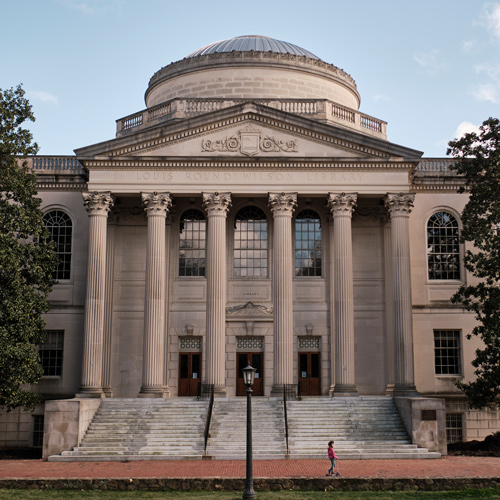
When Acting Chair Professor Benjamin Waterhouse received an email on March 13 from the university announcing the extension of Spring Break and a possible transition to virtual learning for the remainder of the semester, he and the other members of the department’s leadership were ready. The History Department’s Executive Committee—consisting of Associate Chair Professor Molly Worthen, Director of Undergraduate Studies Professor Brett Whalen, and Director of Graduate Studies Sarah Shields—had already formulated a plan to utilize the department’s existing online capabilities and resources to transition all courses online as quickly as possible.
“I would stress the department came together without coming together,” Waterhouse recalls. “With very short notice, all of our instructors in a period of basically ten days successfully brought together their experience to find a way to finish the semester in a way that combined academic rigor with compassion for students experiencing unprecedented disruption in their lives.” Waterhouse, Whalen, and Worthen divided the instructional faculty into three “teams” to provide assistance to colleagues and coordinate best practices, such as use of the university’s virtual meeting platform, Zoom. In this effort they were aided by the significant in-house experience the department has accumulated over the past several years in online learning and digital humanities. Housed in the History Department, the UNC Digital History Lab is directed by three advanced PhD students, Gabriel Moss, Emma Rothberg, and Garrett Wright. Waterhouse effusively praises the leadership of these three scholars. “On very short notice they were very effective in reconfiguring the operations of the digital history lab to facilitate online learning and teaching.” Within a week and a half of the university’s announcement, instructors were implementing a wide range of strategies. “Some people used Zoom to give live lectures, some recorded and moderated discussion sections, while others changed the allocation of reading and class discussion. We broadly maintained the pedagogical integrity of the classes and kept students engaged,” Waterhouse adds.
Director of Undergraduate Studies Whalen echoes the importance of the department’s existing digital capacities in smoothing the transition. “I would emphasize I’m pretty proud of how the department handled this whole thing. People jumped right in.” Whalen also makes a point of emphasizing the tremendous effort invested behind the scenes by the departmental staff, who had to make all the administrative and logistical affairs of the department “go virtual” practically overnight. As Whalen explains, this was no mean feat. “I was in the office the last day campus was open and was watching the office staff working and getting ready to make the transition themselves,” he recounts. “They were realizing they might not be in their offices for who knows how long. All I could think was: ‘You guys are amazing!’ I was practically getting misty eyed. The staff were just as important as the faculty in getting us through this experience.”
For all the groundwork laid by faculty and staff for the “return” to classes after Spring Break, no amount of preparation could have prepared some of the department’s students for the disruption caused by the crisis. Virtually all teaching faculty found themselves trying to accommodate students faced with uncertain living situations, new childcare responsibilities, sudden unemployment and, in some cases, loss of friends and loved ones. “I got an email from a student in my large lecture course on medieval Europe who was from China,” Whalen recalls. “She was placed in a two-week quarantine as soon as he returned to the U.S., barely had wireless, no access to the Internet, and kept trying to get in touch with me on the phone.” Another faculty member, Professor Eren Tasar, describes a student in his HIST 398 research seminar who, after returning home to New England, found himself caring full time for his younger brother, a toddler. These and many other stories of hardship experienced by students underscore the importance of the flexibility and compassion displayed by department faculty this term.
But as Waterhouse reminds colleagues, if there is one silver lining to the pandemic’s impact on university teaching, it is that the crisis has brought people together. This is true not only of faculty and staff, but also of some students. Professor Matthew Andrews, who posted his lectures online this term, explains that “I have received, literally, dozens of emails from students telling me that they sit down with siblings, parents, or grandparents and watch my lectures on Baseball and American History or my lectures on the Olympic Games.” For some students, the uncertainty of the times has allowed them to reconnect with family members. Andrews continues: “In the past, students have told me that they call their parents to talk about what they are learning in these course, sport being the lingua franca, and all that—and that these courses help them connect with family members in ways that had not previously been possible.” Andrews underscores a reality the entire departmental community—faculty, staff and students—is aware of: That the study of the past can hold profound lessons for the present, and in these times of unprecedented disruption, identifying our shared experiences can bring us all together.
“We teach history to make connections between the past and the present,” Andrews continues. “I miss being in the classroom, striving to make those connections with the students and in person. But this semester, my students showed me how the connection I feared lost in our classroom was replaced by connections between them, their loved ones, and our class material. That wasn’t what I was expecting, but I’ll take it.”
